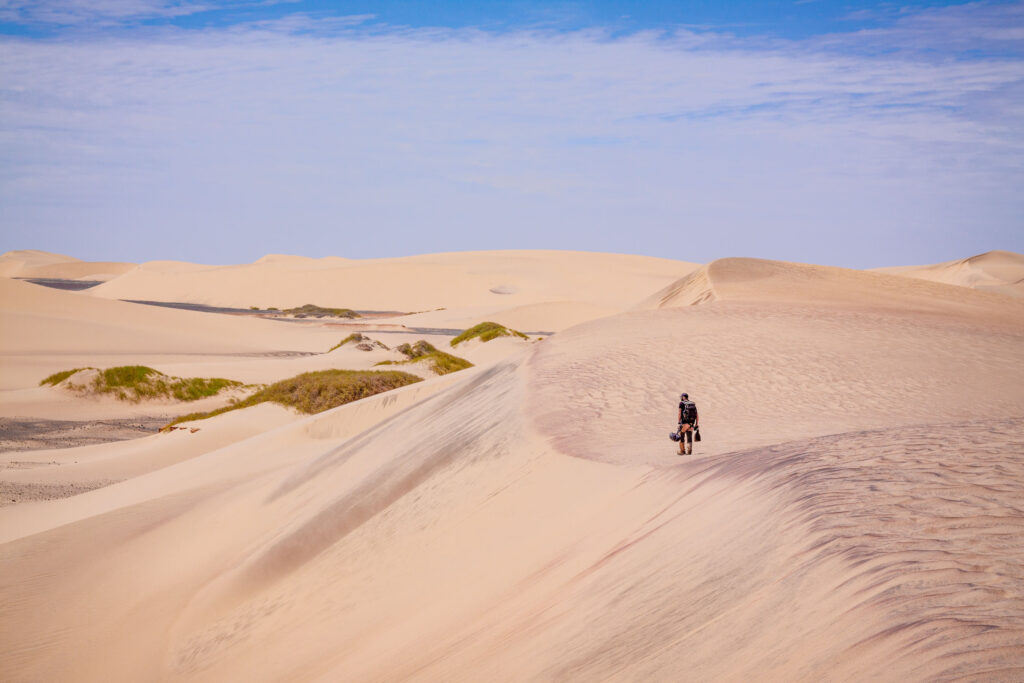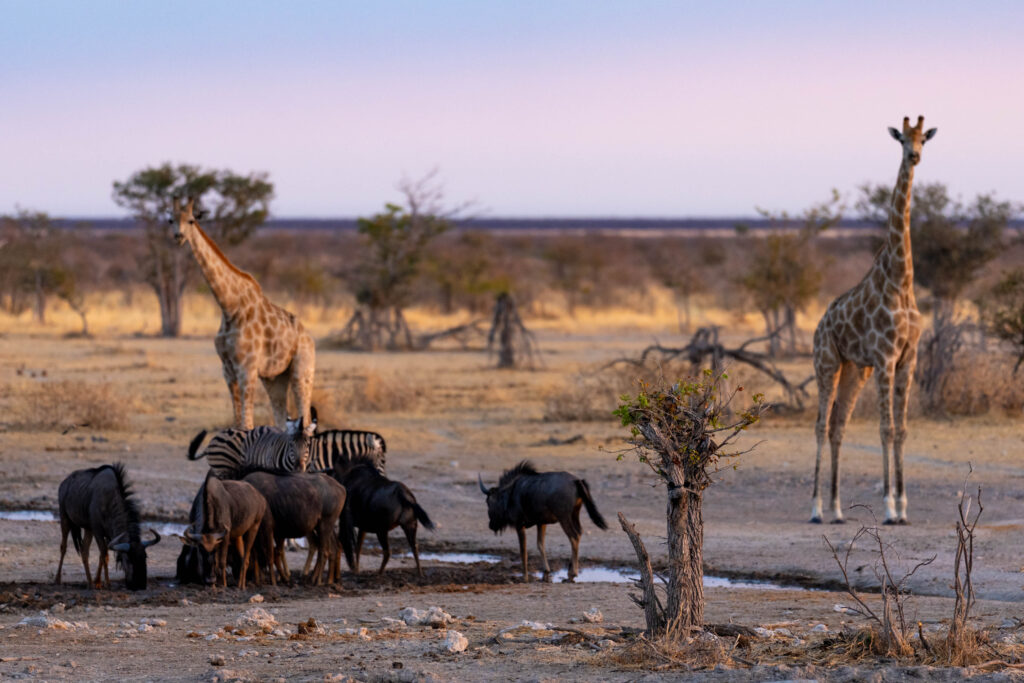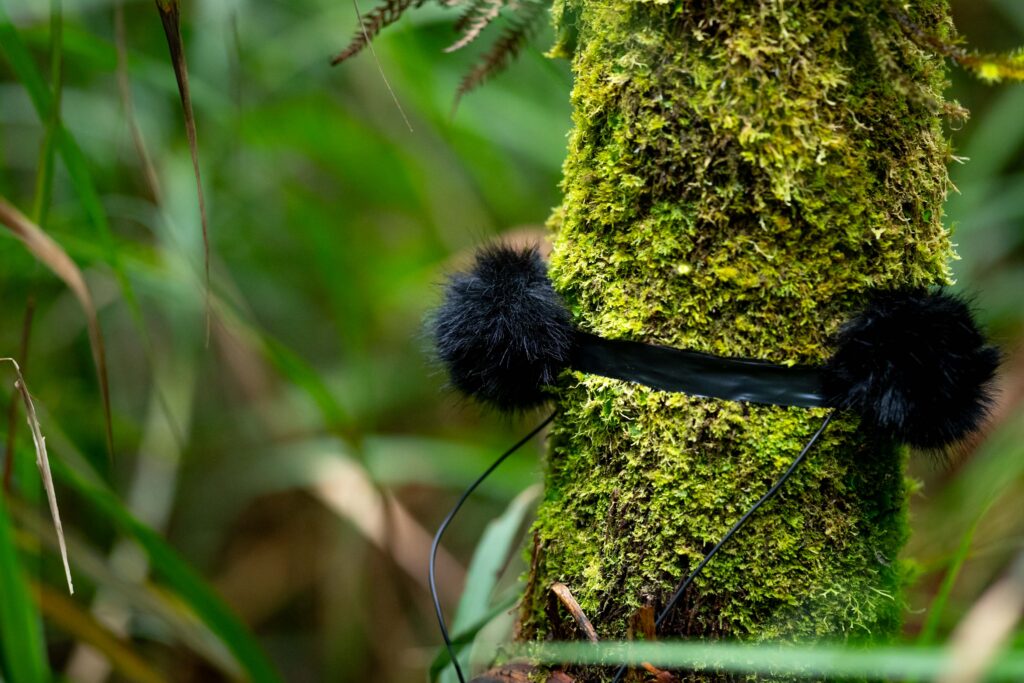
Defining and redefining terms in field recording
Field recording isn’t a very new discipline, but it’s not been around for as much as photography or other arts. Consequently there is still a lot of room for innovation and creativity, and a lot of common concepts can be vaguely defined.
Since I am mostly self taught, I’ve had to come up with good names for some concepts to make my job easier. In some situations I picked up a term that I had overheard or read somewhere – for example drop rigs which I’m not sure who came up with. In other situations I spent considerable time brainstorming before I found the best and most descriptive name – tree ears and landscape nodes for example. I am not aware of these latter two being used before I came up with them, but of course I may have dug them out of my subconscious where they were probably bouncing around for a long time.
Listening in the context of field recording

Listening is a hugely important skill for audio professionals, people working in media and humans in general. As I always say, our sense of hearing only gets a fraction of the stimulation that we get visually, and all of this is at a society level. We are used to scrolling through media paying little attention and looking for the next micro dopamine hit. Living in noisy urban environments where little, if any, natural sound can reach us certainly doesn’t help.
For most of us this means that we need to unlearn a lot of habits if we want to fix this imbalance. Going out into nature and paying attention to minute, subtle sounds is a good start. Learning to identify bird species by their calls would be a logical progression. But this will only take us as far as using our ears in the way that our ancestors used to a few hundred years ago.
To listen as a sound recordist requires all this and more. When I’m out in the field and I want to capture the acoustic essence of a space, I first spend considerable time trying to find a good perspective. This is very similar to framing an image, but instead of looking at it from a visual point of view, I think about how the sounds in that space behave, where their sources will be after I’ve pressed record, how they will interact with each other and with the space itself. Even more importantly, I think of my recording setup and how its limitations will impact the recording I am capturing.
This type of prospective listening has helped me immensely over the years. Whether I like it or not, I only have a limited amount of time to explore and record a given environment. That can be a few hours or a few weeks, but regardless of the time I have, it is never enough to record all possible perspectives.
As I make choices and narrow down my options, I need to draw on past experiences and on my listening skills to identify the best place to put my microphones. For more than a decade I spent considerable time in the field with my headphones on, listening to a variety of environments through many microphone types, makes and models. At this stage I rarely use my headphones in the field anymore, because I’ve been honing my field listening skills for so long.
Drop rigs

Any recording rig that is set up and left unattended for more than a few minutes is, in essence, a drop rig.
🎥 Check out this video I put together a few years ago showcasing how I set up a drop rig.
I’ve been recording wildlife and nature for more than 15 years. This developed very organically from my sound design practice, as I needed a lot of material and did not want to buy stock audio or I couldn’t find the exact thing I required. In the first few years I would take my handheld recorder out into the field and point the mics at whatever I wanted to record.
This proved to be very limiting though, because wildlife will behave very differently in the presence of humans. I wanted to capture the sound of nature and wildlife in its natural state, and I noticed that a lot of the birds I was trying to record were only making alarm sounds when I was there. The only way to avoid this was to leave my kit unattended in the field.

At first I was extremely reluctant to leave my expensive equipment out in the wilderness at the mercy of wildlife, weather and/or people. I would set up a rig in a forest at 3am, drive off for a few km and then quietly wait in my car just in case something happened to the rig. After doing this for a few years I gradually started to be more relaxed about it. The fact that I was capturing some lovely wildlife sounds this way definitely helped.
As soon as I felt more relaxed about using drop rigs, I started to perfect my approach. I became much more picky about recording locations and perspective. I started to study ecology and animal behaviour so I could know what to expect in terms of wildlife calls.
Initially I was using the gigantic Sound Devices 633 and a Sennheiser MK30/8040 DMS rig. Eventually I realised that I could get pretty close to that level of quality with a Sony PCM A10 and a pair of pip mics. Once I started using much smaller and lighter equipment, I began bringing more of these mini drop rigs along on all my expeditions.
I currently bring around 6 to 10 small drop rigs on any trip. Depending on what I’m trying to record, I choose my locations carefully based on learnings from prior expeditions, animal behaviour knowledge and local advice.
Landscape nodes

One of the cool things about drop rigs is that you can get a glimpse into what happens in an environment when you’re not there. I’ve recorded thousands of hours of soundscapes in any imaginable habitat, from glacial, arctic and montane to rainforests, savannahs, deserts and anywhere in between. In many of these locations there is a lot of wildlife, but species and individuals are not distributed evenly. More often than not I would end up with many hours of very quiet and sparse ambience when what I really wanted was wildlife calls.
Wildlife behaviour is fairly uncomplicated – animals need to drink, eat and mate. To accomplish this, many species have to hold a territory or a home range. Of course this is a bit of an oversimplification, but all the actions of an individual will stem from these basic needs.
Conservationists and researchers who use camera traps and sound recording equipment in the field will usually set them up in a grid pattern. This approach gives them a good overview into the lives of wildlife and offers the highest chance of capturing the images and sounds required. This also allows them to estimate population densities, numbers of individuals and other key indicators that help them understand the ecosystem better.

For me, the most important aspect is very different: excellent audio recordings regardless of the conservation value. The downside of the grid system is that it does not account for species behaviour, landscape features, time of the year, local knowledge etc. That means I need to take an approach that is very different.
I prefer to set up my rigs where there is the highest probability of action and interaction, both intra- and inter- species. It has taken me more than a decade of trying to record the sounds of wildlife to be able to recognise these hotspots as soon as I see them.
I have long brainstormed a good name for these hotspots and the best one I could think of is landscape nodes. A node in the landscape is a spot where species and individuals intersect, connect and/or interact. In a savannah this could be a water hole that wildlife inevitably has to visit, especially in the dry season when water availability is scarce. It could be a lone tree in a sparse landscape where creatures can find food and/or shade. In a thick forest this could be a clearing that breaks the continuity and allows for different plants to grow. Liminal spaces between different habitats are excellent landscape nodes – think of the edge of a forest where raptors perch in trees waiting for their prey to show up. Can you come up with other examples?
Tree ears

This is an easy one – tree ears are recording rigs set up on trees, approximating the shape of the human head and the orientation of our ears. The distance between microphones should be around 17 cm. While the angle doesn’t matter much with omnidirectional microphones, the grooves and irregularities in the bark can sometimes help make the capsules pick up sound in a slightly more directional way.
The ORTF technique developed last century requires a 110 degree angle between cardioid mics and I sometimes try to replicate that. However, these are not hard and fast rules. In my practice I am very flexible and I never measure distances, angles or loudness in the field.
The tree ears technique is perfect if you are trying to record the sounds of a habitat from the timeless perspective of a tree. To my ears it sounds way better and more immersive than simply putting the mics on a tripod.
Next level drop rigs

Now that we’ve established what the basic drop rig is, it’s time to take it to the next level. For me this has been a natural progression from leaving kit out in a forest trying to capture anything and everything that would happen around it. In essence, any specialised way of using a drop rig can be considered next level. Let’s look at a few examples.
The basic drop rig will ideally use omnidirectional mics, because it’s not easy to tell where the sound sources will be over the duration of the drop rig session. Having said that, in some situations there are high chances of the sound coming from a certain direction so you can use directional mics to record.
One of my favourite birds to record is the Northern raven, and last year I discovered a place where more than a dozen individuals like to roost at night. They tend to go back to the same trees every evening and they call quite a bit, so I set up my cardioid mics on the forest floor facing the trees in question. I managed to capture some lovely calls in the rain this way, and it sounded much better than my earlier attempts where I was using omnidirectional mics.
In another example, on my expedition to Madagascar a few years back I did some impromptu whale recording. There were several humpback males calling in the little bay where I was based, but I was there to capture the sounds of the rainforest and only had very little time to explore the pelagic soundscape.
What better application for a drop rig then? One evening after I had returned from the rainforest I took a small boat out at sea and anchored it there. I then set up a hydrophone drop rig there and was picked up by a second boat so I could return to base. The rig was out for a few days capturing the lovely underwater soundscape while I was doing my work on land.
A better option would have been to set up the drop rig on the seafloor, but I was not prepared for this and didn’t have the required equipment. I have plans to do this on an upcoming expedition though and this will definitely fall under the next level category.
On two separate occasions I used hydrophones to record ice with drop rigs. In Iceland I captured the sounds of the glacier Vatnajokull calving and crashing into a frozen lagoon, in extremely slow motion. In a sub-zero Gobi desert landscape I recorded the sounds of a frozen lake that sang overnight.
There you have it, folks. I hope you enjoyed reading about my field recording practice. Let me know in the comments if there’s anything you would like to add.
🎧 Listen to George Vlad’s recordings on Earth.fm
🖋️ Read George Vlad’s articles on the Earth.fm blog
All photos courtesy of George Vlad
Earth.fm is a completely free streaming service of 1000+ nature sounds from around the world, offering natural soundscapes and guided meditations for people who wish to listen to nature, relax, and become more connected. Launched in 2022, Earth.fm is a non-profit and a 1% for the Planet Environmental Partner.
Check out our recordings of nature ambience from sound recordists and artists spanning the globe, our thematic playlists of immersive soundscapes and our Wind Is the Original Radio podcast.
You can join the Earth.fm family by signing up for our newsletter of weekly inspiration for your precious ears, or become a member to enjoy the extra Earth.fm features and goodies and support us on our mission.
Subscription fees contribute to growing our library of authentic nature sounds, research into topics like noise pollution and the connection between nature and mental wellbeing, as well as funding grants that support emerging nature sound recordists from underprivileged communities.
